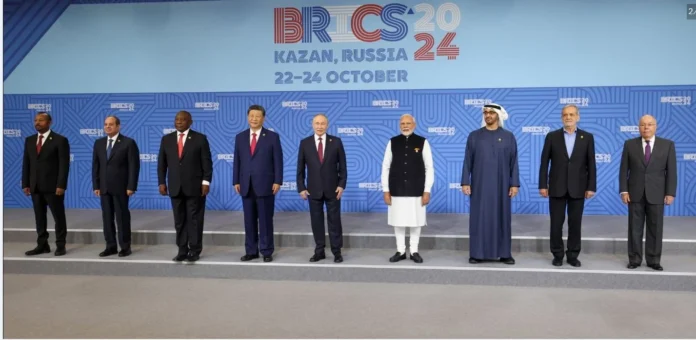By Annunthra Rangan
As geopolitical tensions mount, US President Donald Trump has threatened to impose 100 percent tariffs on countries that challenge the US dollar’s global dominance—chief among them the BRICS bloc: Brazil, Russia, India, China, and South Africa, as well as recent additions Egypt, Ethiopia, and Iran. Though intended to deter de-dollarization, such tariffs risk destabilizing global markets, slowing GDP growth, and driving inflation in both the US and targeted nations.
China leads the BRICS efforts to internationalize the renminbi (RMB), while Russia, under Western sanctions, seeks distance from the dollar. Yet, BRICS remains far from dislodging the greenback’s supremacy in global finance.
China In The Crosshairs
Should the US implement these tariffs, China—America’s major trading partner—would be hardest hit. While inflation would rise across BRICS, China might temper the effect with monetary tightening by its central bank, the People’s Bank of China.
Asian Allies And Regional Reactions
In Asia, China’s Embassy in India condemned the tariffs as “unilateralism and protectionism”. Urging solidarity, it called for developing nations to oppose Washington’s actions. Embassy spokesperson Yu Jing emphasized the complementary trade ties between India and China and the need for unity in the Global South.
This came after Trump raised cumulative tariffs on Chinese goods to 104 percent, prompting Beijing’s retaliatory 34 percent tariff. Additional US tariffs are expected—particularly targeting pharmaceuticals, a major sector for both China and India.
India: Between Pressure And Partnership
India, though not the main target, has faced a 26 percent US duty on exports. Key Indian sectors—manufacturing, tech and pharma—face growing uncertainty. Yet, Trump’s temporary suspension of reciprocal tariffs offers India a diplomatic opening.
As of April 10, India has accelerated trade negotiations with the US, benefiting exporters, particularly in seafood. With goals to finalize the first phase of a bilateral deal by October 2025, both nations aim to grow trade to $500 billion by 2030.
Strategic Trade Diplomacy
India has offered duty-free access to select American goods, including those under the Production-Linked Incentive (PLI) scheme. This move is widely seen as a step towards deepening bilateral ties. The PLI scheme spans 14 sectors—from mobile phones to pharmaceuticals—with an allocation of Rs 1.97 lakh crore.
Meanwhile, India’s Reserve Bank, responding to global uncertainty, has cut interest rates to support growth. RBI Governor Sanjay Malhotra warned that US-China trade tensions remain a significant threat to India’s economic stability.
Currency Wars: Dollar Vs The “Unit”
The dollar still dominates—backing most global trade and central bank reserves. However, BRICS nations are increasingly exploring de-dollarization. China is leading, aiming to internationalize the RMB and build an alternative financial infrastructure.
At the 2024 BRICS Summit in Kazan, leaders revisited the idea of a shared currency—tentatively named the “Unit” and possibly backed by gold. Russian President Vladimir Putin introduced a prototype BRICS banknote and emphasized the need for financial systems that reduce reliance on SWIFT and protect against political interference.
BRICS Bridge And Digital Currencies
One of BRICS’ most ambitious proposals is the “BRICS Bridge,” a blockchain-based payment network to support cross-border settlements using central bank digital currencies (CBDCs). This could lower costs, enhance transparency, and improve financial inclusion. However, success depends on deep coordination across member states with divergent economies and political agendas.
Despite momentum, many challenges remain. Analysts question the feasibility of a common BRICS currency given differing national priorities—especially China’s push for RMB dominance, which could undermine BRICS unity.
India’s Clear Position
India has distanced itself from calls for a unified BRICS currency, affirming that it does not seek to challenge the dollar’s status. External Affairs Minister S Jaishankar reiterated this stance, noting that India has communicated clearly with the US and remains committed to pragmatic engagement within BRICS without jeopardizing its strategic ties with Washington.
Trump’s claim that BRICS has “broken up” under tariff pressure is an overstatement, but it does highlight growing divisions between emerging economies and US financial leadership.
The Long Game: De-Dollarization Realities
Though talk of de-dollarization is growing, the dollar remains entrenched—accounting for 88 percent of forex trades and more than half of global reserves. Alternatives must replicate the US financial system’s depth, transparency, and stability to rival it. While multiple strong currencies may emerge, unseating the dollar would take years, not months.
The Economic Fallout
Sweeping US tariffs on BRICS could have devastating consequences. China, heavily export-dependent, would likely face steep GDP losses. Inflation would rise globally. For the US, projections show GDP losses of up to $432 billion and consumer price increases of 1.6 percent by the end of a potential second Trump term.
Given current global dynamics, Trump’s proposed tariffs appear not only economically harmful, but also strategically short-sighted.
—The writer is a Senior Research Officer at Chennai Centre for China Studies. Her research interests constitute China-WANA (West Asia and North Africa) relations and human rights


